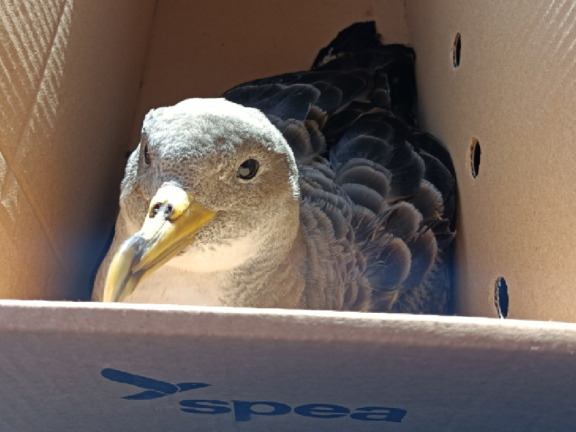Sampling nocturnal insects in protected areas
A simple light attracts dozens of insects
In the summer of 2022, the SPEA team in Madeira and the Azores, and the SEO in the Canary Islands, went out in the field to survey nocturnal insect species in Natura 2000 protected areas, using light traps. In Madeira, some points were repeated in the spring of 2023 to complement some information.
Methodologies employed
Two methodologies for capturing insects are used in these studies: light traps and wine rope.
The wine rope consists of a rope soaked in a mixture of wine and sugar, hung strategically to attract insects by olfaction, being a complementary method. The light trap consists of a bucket, three acrylic plates and a LED lamp. The light attracts the insects, which hit the acrylic plates, facilitating their capture or fall directly into the bucket. Inside the bucket, there are also egg boxes where the insects can take shelter after being captured.
Find out how the light trap works
After the capture, the individuals are identified and catalogued. The data collected is extremely important for understanding the distribution of these insects and how they are affected by light pollution.
These studies will contribute to an increase in the amount of information available on this animal group in the protected areas of Madeira, Azores and Canary Islands.
There were about 70 points where the teams spent 4 hours, during the night, capturing insects attracted by the light traps. In the best preserved areas we obtained, consequently, more specimens and greater species richness!
Soon we will have new listings of the species that are attracted by the artificial lights.
Why are insects attracted to streetlights?
The glow of the moon and stars are used as ‘navigation lighthouses’ by an over majority of nocturnal insects that follow them to return to their habitat after searching for food or sexual partners, or to escape predators. Under normal conditions, insects, such as moths, would fly crosswise to such a glow. However, artificial lights are switched on at night and end up as false guidance for animals with positive phototaxis (movement of attraction to light) that see them as very close ‘moons’.
Following the path of these intense lights usually results in fatalities either by becoming visible to predators, collision or exhaustion. The chances of survival for many species of nocturnal insects have significantly decreased due to this disruption of their natural behaviour. There is strong evidence that light pollution may be behind declines in insect populations.
Many nocturnal insects, such as moths, are pollinators. When they are attracted to artificial night lighting, they end up using up all their energy or are predated, effectively reducing their populations.
In this way, light pollution ends up having a negative effect on agricultural production, since nocturnal pollination occurs less frequently and effectively.







